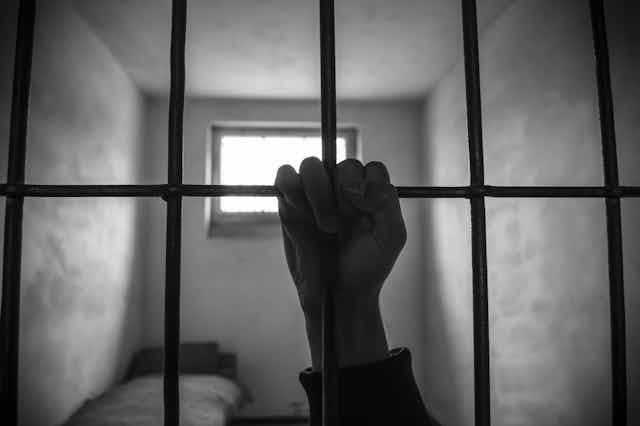Custody in police stations is a very locked-down affair. People who have been arrested and are detained spend most of the time isolated in their cells. Custody visitors, the only outsiders who get to see the detainees, are neither respected by the police nor trusted by the detainees.
My recent research has revealed serious problems in the system of monitoring police custody, now known as the Independent Custody Visiting Scheme. This scheme, run locally by Police and Crime Commissioners, enables members of the public to make random, unannounced visits to check on the welfare of the detainees in police custody. There are about 2,000 custody visitors making about 11,000 visits each year in England and Wales. They make the visits in pairs, and each custody block gets a visit about once a week.
But the custody visitors are not independent of the police, and my research has found that the work they do is not effective. The scheme doesn’t meet international human rights obligations under the UN Convention against Torture, largely because of the visitors’ lack of independence and expertise. And the scheme is probably counterproductive, as it obscures the need for proper effective regulation.
The police have wide discretion in how they operate custody, where the hundreds of thousands of people who have been arrested each year are processed. The police say the primary purpose of detention in custody is to make the suspect “amenable” to investigation. There is little regulation, and what the police do there is largely invisible to the outside world. Those who are detained in custody run the risk of being abused by the police, whatever the extent of the actual abuse, and some 20 detainees lose their lives each year. Perhaps the best-known instance is Sean Rigg, who died following the application of what the coroner’s inquest called “unsuitable” and “unnecessary” force by officers at Brixton police station in August 2008.
A former custody sergeant who I interviewed characterised custody in police stations as “a very locked-down environment, the police’s world, which nobody else except custody visitors really gets a view into”. But the power of the police and official policy prevent custody visitors from making independent and effective scrutiny of what is going on in custody.

Not independent or effective
Policy concerning custody visiting has been developed by the police and the Home Office. Yet while the scheme was the brainchild of MP Michael Meacher and the senior judge and peer, Leslie Scarman, in the early 1980s, the official approach to its development has been radically different from the lines they envisaged. The ethos is to promote public confidence in the police, not safeguard detainees – but achieves neither.
Custody visiting is organised in a way that causes the police least trouble: visits take place at predictable times, and never during the night. The authorities have airbrushed out the idea that visits could be a deterrent to police misconduct that might lead to deaths in custody. The Home Office and the police were clearly uncomfortable with the idea from the start, and there is now a deafening silence on the issue in the official literature about the schemes.
Under the Police Reform Act 2002, custody visitors are required to be independent of the police and the Police and Crime Commissioners. Yet I found that the visitors were not independent.
I interviewed 23 visitors and observed 21 visits in one police area. I also interviewed 17 detainees, whose views about custody visiting have never been heard before, as well as police officers, custody staff and defence lawyers, and the administrator of the local scheme.
The visitors often come from sections of society more favourable to the police, and some were related to police officers or friends with them. I observed that many visitors did not keep their distance from the police during visits. They almost always failed to challenge the police, and those who do cause trouble can be dismissed summarily by the local Police and Crime Commissioner. The training they received was very much from the police’s point of view. And when it came to the most important, defining issue of deaths in custody, almost all of the visitors that I interviewed told me their work had nothing to do with it.
From what I observed, the existence of the visiting scheme, and specific visits and the reports of those visits, made no significant impact on police behaviour. The police could delay admission to the custody block and deny access to some detainees. The custody staff hovered close by the cells while the visitors were meeting those detainees they allowed them to see, making it impossible for the detainees to pass on confidential information.
My research was carried out in just one police area. However, all local custody visiting schemes operate under the same statutory system, and all visitors are subject to the same fundamental power imbalance with the police, which makes a decisive impact on the way the visitors work.
Make visits count
For custody visiting to make a more effective contribution to the regulation of police detention, radical reforms are needed. There would need to be a proper regulatory system where visits did not occur at times when the police expected them. Visitors should gain immediate access to the custody blocks and new statutory powers should allow visitors to force the police to take them seriously. Overall, the scheme needs much more independence from the state and more publicity.
My research shows that the visiting scheme lacks legitimacy. When that is appreciated, pressure for these reforms must surely follow. People would see the urgent need for a regulator of police custody to be genuinely independent and rigorously effective.

